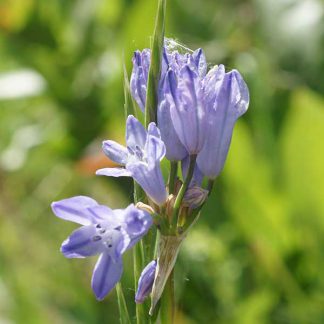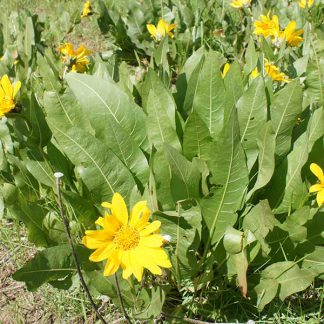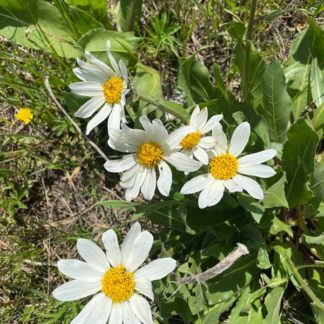one to several flowers
Showing 61–69 of 69 results
-

Sisymbrium altissimum / tumble mustard
- inflorescence a raceme with yellow, teeny flowers
- long, thin seed pods (siliques)
- blooms throughout the spring and summer
- shoots look like a bunch of sticks glued together
- dries and breaks off, then tumbles
-

Solanum physalifolium / ground cherry nightshade
- flowers look like potato or tomato flowers
- small white, 5 recurved petals
- clump of yellow stamens protrude from flower
- triangular leaves with wedge-shaped bases
- usually sprawling on ground
-

Stenotus acaulis / stemless goldenweed
- very short, mat forming perennial yellow "daisy"
- thin, lance-shaped leaves, pointing upward
- yellow flower head with 6-15 ray florets, up to 50 disk florets
- in dry, rocky, open-scrub habitats
-

Tetradymia canescens / spineless horsebrush
- shrub - up to 3 feet tall and across; round
- small, yellow composite flowers in clusters of 4 to 8
- dandelion-like seeds often present with flowers
- primary leaves short and linear; long-lived
- secondary leaves in axils of primaries are short-lived
- primary leaves are not spines
-

Triteleia grandiflora / wild hyacinth
- terminal cluster of several, blue (to white) funnel-shaped flowers
- 6 tepals, 3 of which look wrinkled; deep blue lines on each tepal
- only 2-3 very long thin basal leaves
- onion-like but not smelly
- mostly in grasslands - late June, early July
-

Utricularia macrorhiza / common bladderwort
- free-floating aquatic perennial; only the flowers are above water
- yellow, snap-dragon-like flowers; up to 20 per stalk; ca. 1" across
- very fine "leaves" underwater, supported by small (1/8") bladders
- carnivorous and/or symbiotic - bladders capture/digest v. small animals, harbor symbionts
-

Veronica officinalis / heath speedwell
- prostrate, herbaceous perennial
- hairy green stems and leaves (obvious)
- short, erect, spike-like shoots
- ¼" blue/violet flowers
- 4 petals with purple stripes
- gaps and exposed soils
-

Wyethia amplexicaulis / yellow mules ear
- blooms in late June, July
- large yellow sunflower-like central flower, smaller additional flowers
- long, shiny, not-hairy leaves - like green mule's ears
- strongly aromatic
- may cover acres, almost as a monoculture
- crunchy in the fall
-

Wyethia helianthoides / white mule’s ears
- large, white-rayed flowers - like daisies
- large leaves, reminiscent of mule's ears
- uncommon but in huge profusion when it is found
- in wetlands or wetter meadows and especially in the spring.
Showing 61–69 of 69 results